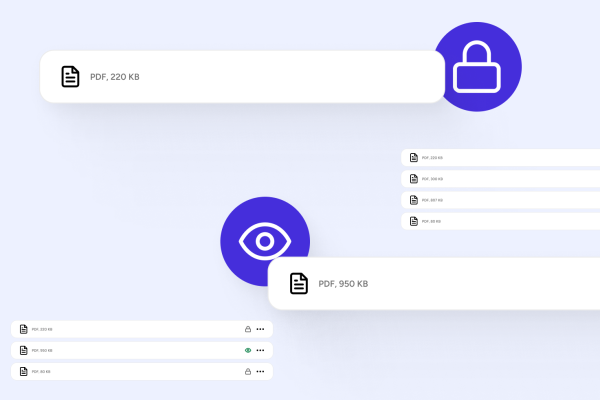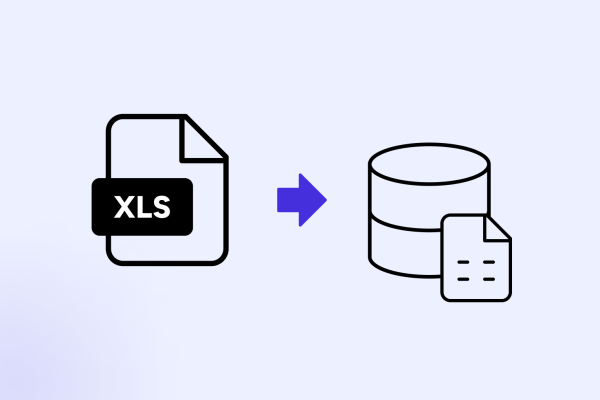Document tracking and managing equipment rental agreements with a DMS

What is document management in the construction industry?
Document management in construction involves organizing, controlling, and streamlining the workflow of vital documents, including contracts, blueprints, and equipment records. Effective document control ensures that all documents are current and easily accessible. A well-structured system supports compliance with industry standards and enhances overall project efficiency.
Understanding document control and workflow
Document control ensures that all documents are accurate and available when needed. It involves establishing a workflow that manages documents efficiently, including processes for checking, updating, and properly storing each document.
The Role of document management software
Document management software is pivotal in this process by automating various tasks. It enhances document accessibility and maintains organization, allowing team members to quickly locate necessary documents, saving time, and minimizing errors.
Benefits of using a construction document management system
A Construction Document Management System offers several benefits:
- Streamlined Equipment Rental Agreements: Simplifies and automates the rental agreement process.
- Better Inspection Tracking: Facilitates easy monitoring of inspections with an equipment inspection checklist.
- Improved Maintenance Scheduling: Organizes maintenance tasks to reduce downtime.
These advantages help optimize resource usage and ensure seamless operations within the construction industry.
How to manage your equipment effectively with DMS
Effective equipment management is crucial in construction. A Document Management System (DMS) assists in tracking and organizing equipment, streamlining the process for handling heavy equipment rental agreements, and maintaining accurate records. This ensures adherence to industry standards and boosts overall productivity.
Creating an Equipment Management Checklist
An equipment management checklist is essential for monitoring and maintaining construction equipment. It includes details such as equipment spec sheets and a list of equipment used in construction. This checklist ensures that all equipment remains in good condition and ready for use.
A comprehensive checklist may feature an equipment inspection checklist and a maintenance schedule, helping to identify equipment that requires repairs or replacement. Regular inspections using a heavy equipment inspection checklist can minimize downtime and enhance safety on construction sites.
Streamlining Equipment Rental Agreements
Efficiently managing equipment rental agreements is vital for smooth operations. A DMS automates the creation and management of these agreements, making it easier to handle short-term equipment rental agreements and heavy equipment rental contracts. This automation saves time and reduces errors in document management.
With a DMS, generating a legal rental document or a legal document rental agreement is quick and accurate, ensuring all necessary details are included and compliance with legal standards is maintained. Additionally, it allows for easy access and retrieval of documents when required.
Inspection and maintenance of heavy equipment
Regular inspection and maintenance are key to prolonging the lifespan and performance of heavy equipment. A DMS effectively manages inspection schedules and maintenance records, tracking essential details such as heavy machinery warranty information and equipment safety inspection checklists.
By organizing maintenance tasks, a DMS helps decrease equipment downtime, allowing construction projects to proceed without unnecessary delays. It also ensures compliance with safety standards, reducing the risk of accidents on site.
Tracking rental agreements effectively
Effective tracking of rental agreements is crucial for managing construction equipment. A DMS provides a centralized location for storing and accessing heavy equipment rental agreements, making it easy to monitor the terms and conditions of each contract.
With a DMS, retrieving information about construction equipment rental costs and equipment rental costs is straightforward. This facilitates budgeting and financial planning, ensuring accurate billing and minimizing resource wastage.
Cost control measures for construction equipment
Controlling costs is a significant concern in the construction industry. A DMS helps track expenses and manage resources efficiently by providing insights into construction equipment rental costs and identifying areas where savings can be achieved.
By maintaining detailed records of equipment usage and maintenance, a DMS ensures accurate billing for equipment rental. This helps minimize resource wastage and optimizes the use of construction tools and machinery.
What are the challenges of document management in construction?
Managing documents in construction presents several challenges, including inconsistent document control, legal risks, and inefficiencies in manual workflows. Addressing these issues is essential for effective management of construction documents.
Common issues with document control
Inconsistent document control can lead to misplaced or outdated documents, causing delays and errors. A robust DMS addresses these problems by automating and standardizing document workflows.
Implementing document control in construction with a DMS ensures that all documents are up-to-date and easily accessible, reducing the risk of errors and enhancing overall efficiency in managing construction documentation.
Addressing compliance and legal risks
Compliance and legal risks are major concerns in the construction industry. A DMS helps mitigate these risks by ensuring that all documents meet industry standards and legal requirements. It provides a secure platform for storing legal rental documents and heavy equipment rental agreements.
By automating document management processes, a DMS reduces the likelihood of non-compliance and legal disputes. It ensures that all necessary documentation is in place, lowering the risk of penalties and other legal issues.
Improving productivity in document management workflows
Enhancing productivity in document management workflows requires both technology adoption and employee training. A DMS supports this by offering digital tools that streamline document handling processes.
Implementing a DMS allows construction companies to manage large volumes of documentation efficiently. It provides easy access to documents such as the list of construction machines and heavy equipment specs, improving productivity and ensuring smooth operations in the construction industry.
Get started today! Book a free demo to see how PIKO can help you manage your fleet structure and assets. With features like bulk document uploads, QR codes for on-site access, and flexible access levels, you’ll have full control over your machinery’s documentation. Plus, our experts can assist with easy integration into your company’s systems.




